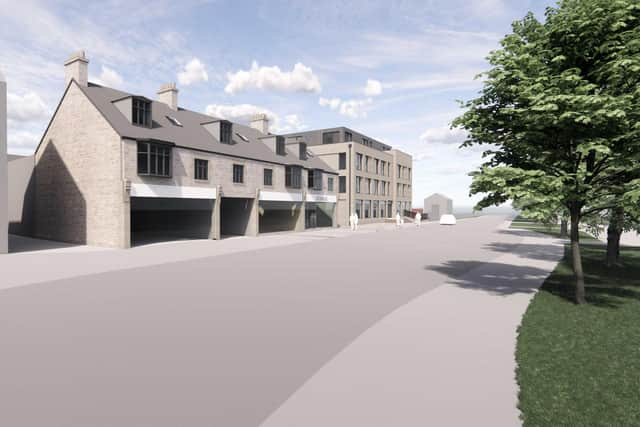Derbyshire Dales council approves plan for new apartment complex in prime Matlock location
and live on Freeview channel 276
The planning committee met at County Hall on Tuesday, August 10, to consider the application for the former Ford dealership site on Causeway Lane.
The plans will see partial demolition of existing buildings and construction of a four-storey building fronting onto the road, retaining the ground floor retail space and adding 14 apartments above.
Advertisement
Hide AdAdvertisement
Hide AdTo the rear of the site a three- and four-storey block will feature 33 apartments with an undercroft area for parking at ground level.


Council officers had asked for permission to approve the development once outstanding concerns from the Environment Agency (EA) over potential flooding issues are resolved by the developer.
Principal planning officer Chris Whitmore, who covered the flooding situation in detail in his case report, described that final step as “technically a formality” and said the council would enforce any new conditions set by the EA.
Eleven committee members agreed to delegate approval to officers, while Councillor Roger Slack abstained, citing disappointment at the developer’s Section 106 contribution to the council’s affordable housing budget.
Advertisement
Hide AdAdvertisement
Hide AdThat has been agreed at £195,000, whereas council policy would usually require somewhere in the region of £600,000. Officers told the meeting the lower contribution was mainly due to the viability of the site.
The general consensus agreed a need to see the underused brownfield site fully developed, and the plans were a marked improvement on previous proposals for a retirement complex which the council had fought off in 2019.
Concern has been raised over the contemporary style, with Councillor Steve Flitter writing to the committee saying “the design and scale are out of keeping with a Victorian town shopping area [and] will have a detrimental effect on the park and the Matlock Bridge conservation area.”
Such sentiments were acknowledged by the committee, but members pointed to other local contemporary developments, and said this was preferable to a “pastiche” of existing architecture.